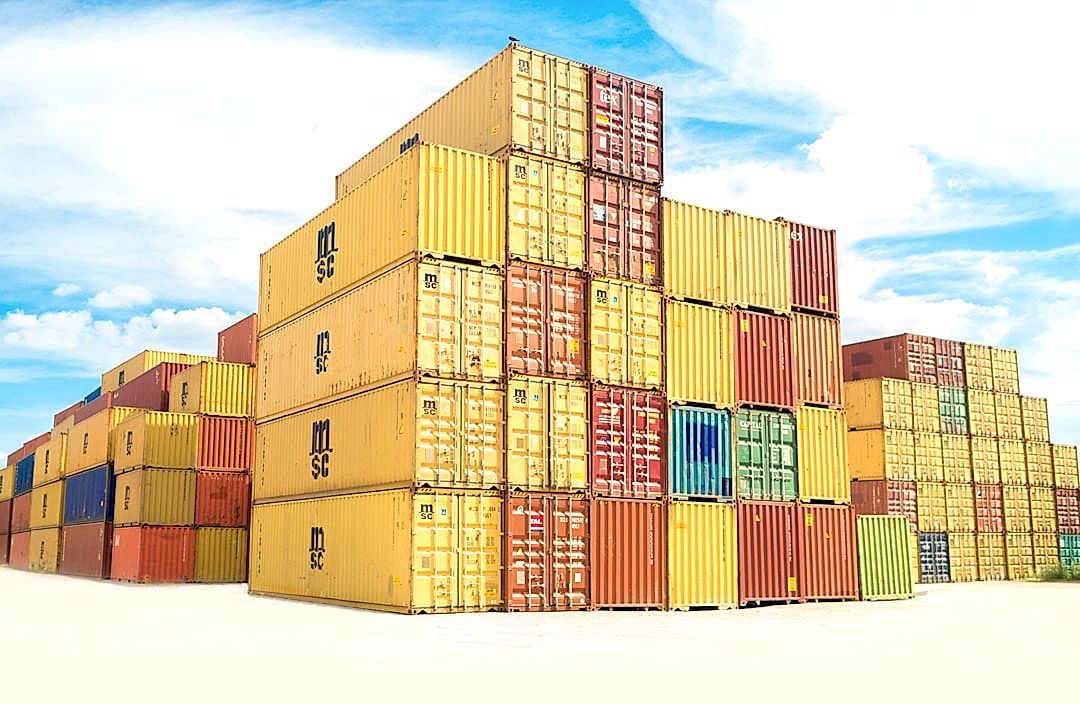In the highly competitive world of produce packing, profitability hinges on efficient logistics management.
Curbing costs without compromising service quality is a necessary game now more than ever.
Many organizations spend an exorbitant amount trying to streamline their logistics, yet somehow find themselves battling the same challenges.
The key factor here lies in addressing the problem areas strategically and effectively.
This, however, requires a clear understanding of several factors, from market volatility to shipping processes.
In this post, we will delve into some strategies that can help produce packers minimize their logistics costs.
Contents
Ways To Reduce Logistics Costs For Produce Packers
1. Implement Advanced Inventory Management Systems
Applying advanced inventory management systems is a powerful strategy for reducing logistics costs for produce packers.
These systems provide necessary tools to maintain a balance between holding too much or too little inventory.
They also provide a complete overview of the stock, helping identify areas where costs can be minimized.
Utilizing advanced inventory management systems can dramatically improve accuracy, reduce waste, and save on storage costs.
By avoiding stockouts and preventing overstocking, these systems can result in significant cost savings.
Rather than relying on manual processes, advanced inventory systems automate much of the process, reducing labor costs and improving efficiency.
And by adopting an inventory solution that offers real-time data, businesses can make more informed inventory decisions and avoid expensive, last-minute scrambles to meet customer demand.
In addition, having an efficient inventory tracking system can greatly impact the shelf life of products.
It can also reduce waste by closely monitoring the inventory.
Moreover, many advanced inventory management systems come with forecasting tools which help predict future demand, ensuring you only order what you need, thereby reducing capital tied up in stock.
These systems make it easier for businesses to anticipate fluctuations in demand, resulting in fewer lost sales due to product unavailability.
Thus, implementing an advanced inventory system can bring about greater accuracy and control over your inventory.
Finally, efficiently managing inventory reduces the level of obsolete stock, saving storage space, and consequently, warehouse costs.
In the context of the produce packing industry, it is particularly important as it helps in managing the perishable items leading to reduced waste and losses.
Therefore, the implementation of advanced inventory management systems can lead to a drastic reduction in logistics costs by cutting down on waste, reducing the need for excess stock and storage space, and boosting overall productivity.
2. Optimize Route Planning for Deliveries
When it comes to reducing logistics costs, one of the most potent strategies to consider is to optimize route planning for deliveries.
This involves more than just determining the shortest or fastest route from point A to point B.
Produce packers should also factor in variables such as traffic conditions, fuel costs, vehicle wear and tear, driver availability, and delivery time windows.
Technological advancements in route optimization software can help businesses predict the most cost-effective routes, taking into account all relevant considerations.
By incorporating advanced route planning, produce packers are afforded better command and control over their delivery scheduling and resource management.
This approach not only cuts down on vehicle usage and fuel expenses, but it also reduces excess spending on labor as drivers now have improved, optimized delivery routes.
Additionally, optimizing route planning tends to result in fewer last-minute changes and delays, ultimately improving customer satisfaction and retention.
Route optimization can also aid in reducing the carbon footprint of the company by using less fuel and making fewer trips.
This not only cuts costs but it could play a crucial part in a company’s sustainability goals.
Moreover, optimized route planning can help increase the capacity for more deliveries without needing to add more vehicles or drivers.
A part of optimizing the routes also involves considering alternative modes of transportation which might sometimes be more cost-effective.
For example, rail, air, and sea freight options should be assessed for long distance, bulky or heavy deliveries where using trucks might not be the most cost-efficient approach.
Stepping up the game in route planning doesn’t mean larger companies need to invest heavily in developing their own route planning software.
There are many third-party applications and software available on the market that are built specifically for optimizing delivery routes.
Investing in such a technological tool might result in significant savings in the long run.
By adopting more advanced systems for route planning, it’s clear to see how produce packers can make considerable reductions in their logistics costs.
3. Streamline Packaging Process
One of the most strategic ways of reducing logistics costs for produce packers is to streamline the packaging process.
The packaging process potentially constitutes a significant portion of the overall costs, prompting the need for constant review and process optimization.
A streamlined process includes performing tasks at peak efficiency and with minimal redundant effort, thus leading to a possible reduction in costs.
Streamlining the packaging process doesn’t only reduce logistical costs but also improves quality control, time management and operational efficiency.
The key to streamlining the packaging process lies in applying systematic approaches to evaluate and reconfigure existing processes.
This often involves deconstructing the process into individual components, identifying inefficiencies, and applying appropriate remedies.
Production planning tools may be instrumental in mapping out the packaging process, and subsequently, identifying areas where efficiencies can be achieved.
Advanced packaging technologies such as automation and robotics can further aid in the streamlining process by reducing manual workload and error rates.
Aside from implementing automation tactics, a streamlined packaging process can be achieved through continued staff training and development.
Staff should be provided with regular training to enhance their skills; thereby increasing packaging speed, reducing errors, and ultimately reducing costs.
Regularly revisiting and overhauling existing procedures, techniques, and resources is also a necessary step in ensuring that the packaging process remains streamlined and efficient.
Moreover, employing quality control measures throughout the packaging process ensures that costly mistakes are minimized.
Through scrutiny and regular audits of the packaging process, it’s possible to identify bottlenecks and inefficiencies that may lead to waste, delays, and added expenses.
Lastly, establishing partnerships with vendors and suppliers can also contribute to a more streamlined process as reduced costs for packaging materials or services could be negotiated.
A streamlined packaging process not only reduces logistics costs for produce packers, but it moreover leads to more predictable and consistent outcomes, enhancing customer satisfaction and trust.
4. Train workers for improved efficiency
One of the most efficient ways of reducing logistics costs for produce packers is by properly training workers.
Highly skilled and knowledgeable workers are more likely to increase productivity and reduce the likelihood of errors that can lead to costly delays and waste.
Providing continuous training allows workers to keep up-to-date with the latest technologies and procedures, which can streamline the packing process and minimize operational costs.
A well-trained workforce can directly contribute to the reduction of logistics costs by enhancing the efficiency of the production process.
When workers are trained to carry out their jobs to the best of their abilities, they are more likely to complete tasks more efficiently, utilising resources wisely, and helping to keep costs down.
Warehouse efficiency can also increase when employees are trained in multiple roles.
Investing in a workforce that can take on different tasks is a strategic move because it can enhance flexibility in the workflow of your operations while also helping to reduce labor costs.
Moreover, training your workers extensively on safety regulations is also crucial in reducing logistics costs.
Workplace accidents can result in costly delays, potential law suits, and can even disrupt operations for an extended period.
Ensuring that all employees understand and adhere to safety standards avoids these unnecessary expenses, providing economic benefits for the company in the long run.
Worker training should also include aspects of quality control to ensure that all produce is packed correctly and to standard.
Errors in packaging can lead to spoilage or damage, both of which can cause significant cost increases in your logistics process.
By having competent staff who understand and maintain quality standards, logistics costs are likely to be reduced through a decrease in waste and customer returns.
Thus, by implementing comprehensive employee training programs, you’ll be equipping your workforce with the right skills to operate efficiently and effectively.
This will not only ensure higher productivity levels but also lead to significant savings in logistics costs – An investment in your people, is an investment in your business.
5. Use Energy-Efficient Warehouse Equipment
In the aim of reducing logistics costs for produce packers, one can’t sideline the potential of using energy-efficient warehouse equipment. The energy consumption of warehouse operations forms a substantial chunk of the overall operational costs, concluding that making the warehouse energy efficient can lead to significant cost savings.
Electric forklifts, for instance, are noted for their lower running costs when compared to traditional petrol or diesel forklifts. Not only do they consume less energy, but they also require less maintenance, further driving down operational costs.
The adoption of energy-efficient lighting systems like LEDs in the warehouse can dramatically reduce the power usage, hence, slashing the energy bills.
Similarly, the use of solar panels on the warehouse roof can generate a substantial amount of electricity, cutting down the reliance on the grid and eventually, the energy charges.
Moreover, implementing automatic shut-off systems for warehouse equipment can prevent unnecessary energy wastage. This means that conveyors, lighting, and other equipment will only use power when necessary, preventing wastage.
To optimize energy consumption, the insulation of the warehouse is an aspect that deserves attention. Well-insulated warehouses retain temperature more efficiently, hence reducing the expenditure on heating or cooling the storage area.
Energy-efficient HVAC systems also play a significant role in reducing energy costs. The newer systems available in the market are more efficient and will consume less energy compared to old, inefficient systems.
Warehouse layout also impacts energy consumption. By designing the layout to minimize travel distance for workers and machinery, you can decrease energy usage and improve productivity.
However, it’s also important to conduct regular energy audits. This helps to identify locations of energy wastage and evaluate the effectiveness of energy-saving strategies.
While the upfront cost of investing in energy-efficient equipment can be significant, it’s important to look at it from a long-term perspective. The cost savings derived from these investments, when calculated over the lifespan of the equipment, far outweigh the initial expenditure.
Furthermore, the use of energy-efficient equipment can bring about significant improvements in operational efficiency – this is another factor that contributes to cost savings in the long run.
Moreover, it’s also worth noting that energy-efficient operations often result in a reduction of a company’s carbon footprint, which not only benefits the environment but can also enhance your company’s reputation with customers who prioritize sustainability.
Lastly, in several countries, the use of energy-efficient equipment is encouraged through tax incentives and grants, which can further aid in offsetting the initial investment costs.
Overall, using energy-efficient warehouse equipment is not only beneficial for the environment, but it also reduces logistics costs – making it a win-win situation for produce packers.
The Bottom Line
As a fundamental necessity, enhancing warehouse operations requires a blend of technology, strategic planning, and workforce training.
Employing sophisticated inventory management systems, optimizing delivery route plans, and streamlining the packaging process can greatly improve overall efficiency and cost-effectiveness.
Further value can be added by investing in training programs that empower workers to perform their tasks with greater precision and speed.
Equally important is the adoption of energy-efficient equipment, which not only reduces operational costs but also enables companies to contribute positively to the environment.
These strategies combined can substantially improve the overall productivity and sustainability of warehouse operations.




